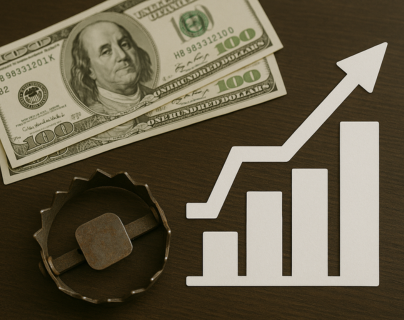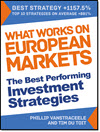If a 7% dividend sounds too good to pass up, you need to read this. In this article, you will learn how high yields can lead you into “dividend traps” that shrink your income and destroy your capital. More importantly, you will discover a safer strategy: Shareholder Yield. It goes beyond dividends to include buybacks, offering stronger income with lower risk.
You will see backtested results, real-world examples, and a simple system you can use to build a high-yield portfolio designed for retirement. This guide will help you protect your income and sleep well at night.
Estimated Reading Time: 6 minutes
When a 7% Dividend Is Too Good to Be True
If you are like many retirees, you probably feel drawn to high-dividend stocks. A 7% or 8% yield can feel like a safe, steady income. It feels like something you can count on - especially when interest rates stay low. But sometimes, that “safe” dividend is not safe at all.
In fact, a high yield can be a red flag. Some of the worst-performing stocks in retirement portfolios start with the best-looking yields.
Why?
Because dividends can be cut. Stocks can fall. And when that happens, your income shrinks and your capital disappears. That is what we call a dividend trap.
What Is a Dividend Trap? (And Why Retirees Fall for Them)
A dividend trap is a stock that pays a high yield - but for the wrong reasons.
- Maybe its price has dropped and the payout looks high.
- Maybe the company is using debt to fund its dividend.
- Maybe earnings are falling, but management wants to look generous.
Whatever the cause, the result is the same: you chase the yield, but get stuck with a sinking stock. You lose income. You lose value.
And in retirement, you do not have time to recover from big losses. That is why dividend traps are so dangerous.
The Shareholder Yield Strategy: A Wiser Lens on Income
This is where Shareholder Yield comes in. It looks beyond just dividends. It measures all the ways a company returns money to you - through dividends and share buybacks. That means you get a fuller picture of how much value the company is giving back.
Why does that matter?
Because buybacks support the share price. They are often more tax-efficient than dividends. And they show that management is confident in the company’s future. So instead of chasing the biggest dividend, you focus on total return to shareholders.
That is how you build lasting income.
Real Backtest: Shareholder Yield Works
Let us look at the numbers. Backtests over decades show that high Shareholder Yield stocks beat the market. For example, between 1927 and 2009, high Shareholder Yield stocks beat the market 97% of the time over 10-year periods. That is not luck. That is a solid strategy.
The following table shows you the results of simply buying the 10% of large stocks with the highest Shareholder Yield (dividend yield plus net stock buybacks) over an 80-year back test period:
Source: 7 Traits for Investing Greatness
Over all 961 (777+184) rolling 3-year periods, the top 10% Shareholder Yield companies beat other large stocks 81% of the time by an average 3.24% per year.
If you extend the test to all 877 (855+22) rolling 10-year periods, you would have beaten the market 97% of the time by 3.41% per year.
That is an outstanding result!
Click here to sigh up for the Shareholder Yield Letter NOW! - Click here
What Retirees Really Need: Income + Protection
When you are retired, your goals are different. You are not chasing quick wins. You want steady income and peace of mind. You want stocks that protect your principal while giving you cash flow. And you want a system you can trust.
That is why Shareholder Yield works so well. It focuses on companies that are large, liquid, and committed to rewarding shareholders.
Most of the companies in this strategy yield around 6%, and many are household names.
The best part?
We stop losses fast and stop buying when the market trends down, which avoids big losses.
How We Screen: A Smarter Way to Pick Income Stocks
We do not pick stocks based on gut feeling or hype. We follow a strict process.
First, we only invest when the market is rising (using the 200-day average).
Then we screen for high Shareholder Yield. Then we run each stock through a 23-point checklist to spot risks.
This checklist looks at debt, cash flow, dividend safety, and more. It helps us find strong companies that will not surprise you later. And we double-check for any major news before buying.
It is a system built for income, protection, and peace of mind.
23-Point Checklist for Safe Income Stocks
Try It Yourself: See How We Screen for 6%+ Yield with $2B+ Companies
If you are tired of guessing and hoping, this is your next step. Try the Shareholder Yield Letter. You will see exactly how we pick high-yield stocks that are also built to last. You will get access to our current picks, updates, and our full screening system.
Remember: it is not just about yield. It is about total return. It is about protecting what you worked hard to earn. And it is about making smart, steady progress toward a safe retirement.
Join the Shareholder Yield Strategy
✅ It is built for retirement
✅ Has an 6%+ average yield
✅ Invests in $2B+ market cap companies
✅ Has a strict stop-loss system
✅ Stops buying in downturns
If this sounds like the strategy you want to follow in your portfolio, you can find more information here: Invest big, win bigger with our market beating large-cap strategy!
Want to have a look before you subscribe? Simply reply click the “Need Help?” button at the bottom of your screen and send a message with “Shareholder Yield trial issue” in it and we will send you a recent issue to review.
Click here to sigh up for the Shareholder Yield Letter NOW! - Click here
FREQUENTLY ASKED QUESTIONS
1. Why should I be careful with high dividend yields?
A high yield, like 7% or more, can feel safe. But often, it is a warning sign. It could mean the stock has dropped in price or the company is struggling. These are called dividend traps. The company might cut the dividend, and the stock could fall more. That means less income and a smaller portfolio.
2. How can I tell if a dividend is safe?
Look beyond the yield. Check if the company is growing, profitable, and using its cash wisely. Tools like the 23-point checklist in the Shareholder Yield Letter screen for red flags like rising debt or falling earnings. A strong company can afford its dividend without borrowing.
3. What is Shareholder Yield, and why is it better?
Shareholder Yield includes both dividends and share buybacks. Buybacks help support the share price and are often better for taxes. Together, they show how much a company gives back to shareholders. This gives you a clearer picture than dividends alone.
4. I’m retired. Is Shareholder Yield right for me?
Yes. This strategy focuses on large, stable companies that return about 6% on average. It is designed for income and protection. It avoids new buys when the market trends down and uses stop-loss rules to protect your savings from large losses.
5. What if the market starts falling? Will I still get stock picks?
No. The strategy stops buying in falling markets, based on the 200-day average. This helps avoid investing just before a downturn and protects your portfolio from widespread losses.
6. Has this strategy actually worked long-term?
Yes. In an 80-year backtest, stocks with high Shareholder Yield beat the market 97% of the time over 10-year periods. That is a very strong track record, backed by real data.
7. How is this different from just buying dividend stocks?
Pure dividend strategies often miss the full picture. They do not account for buybacks or company health. Shareholder Yield looks at total return to you. It avoids companies that pay out too much without earning enough, which protects your income and your capital.
Click here to sigh up for the Shareholder Yield Letter NOW! - Click here


